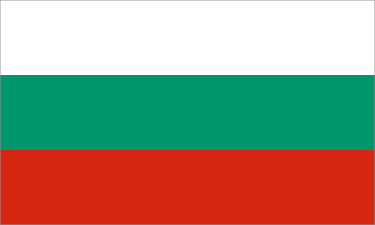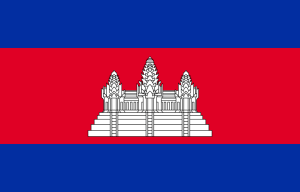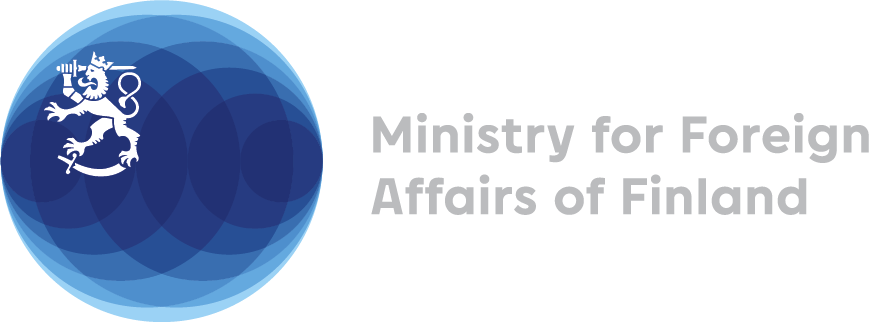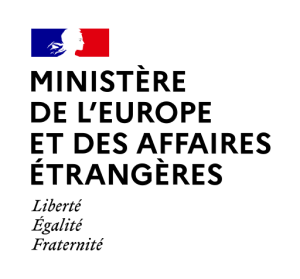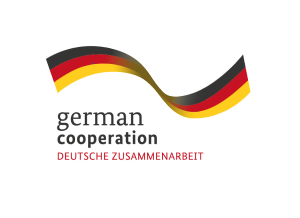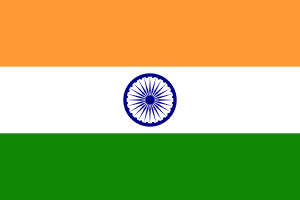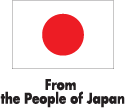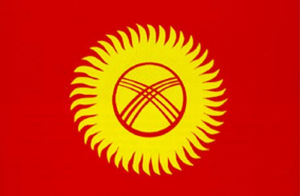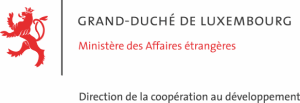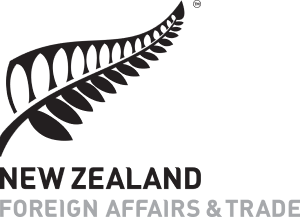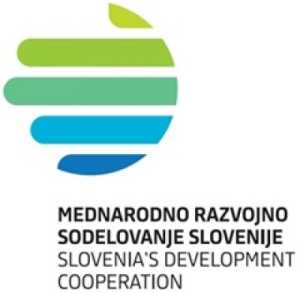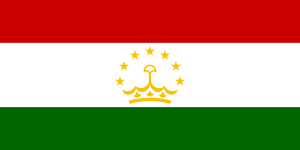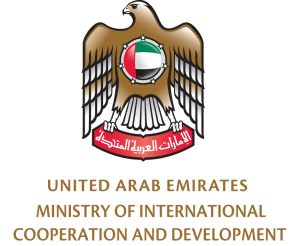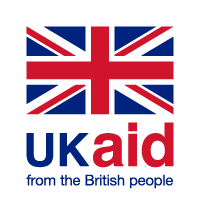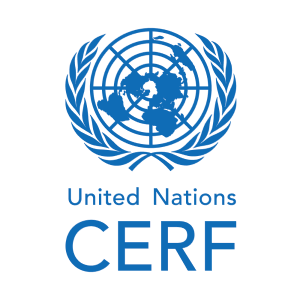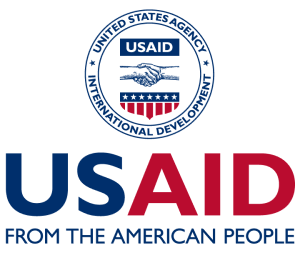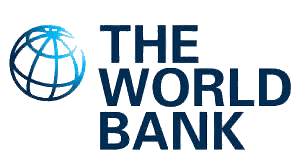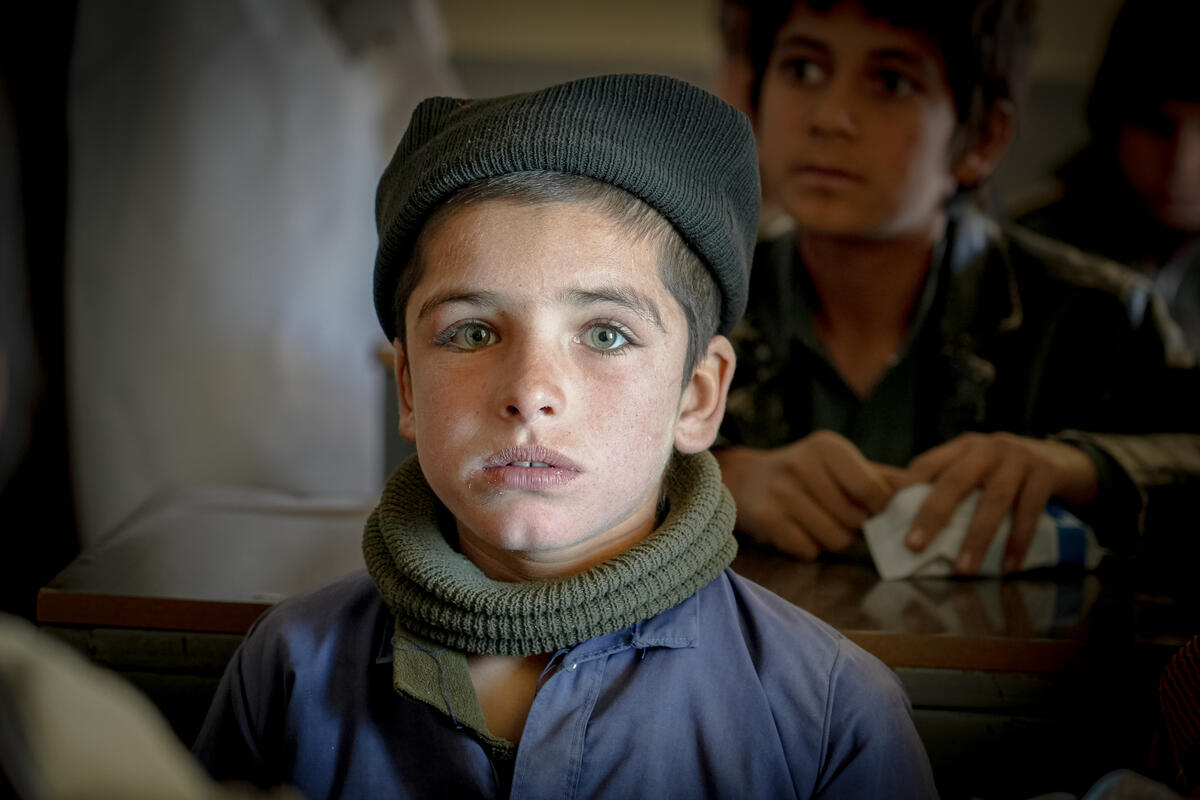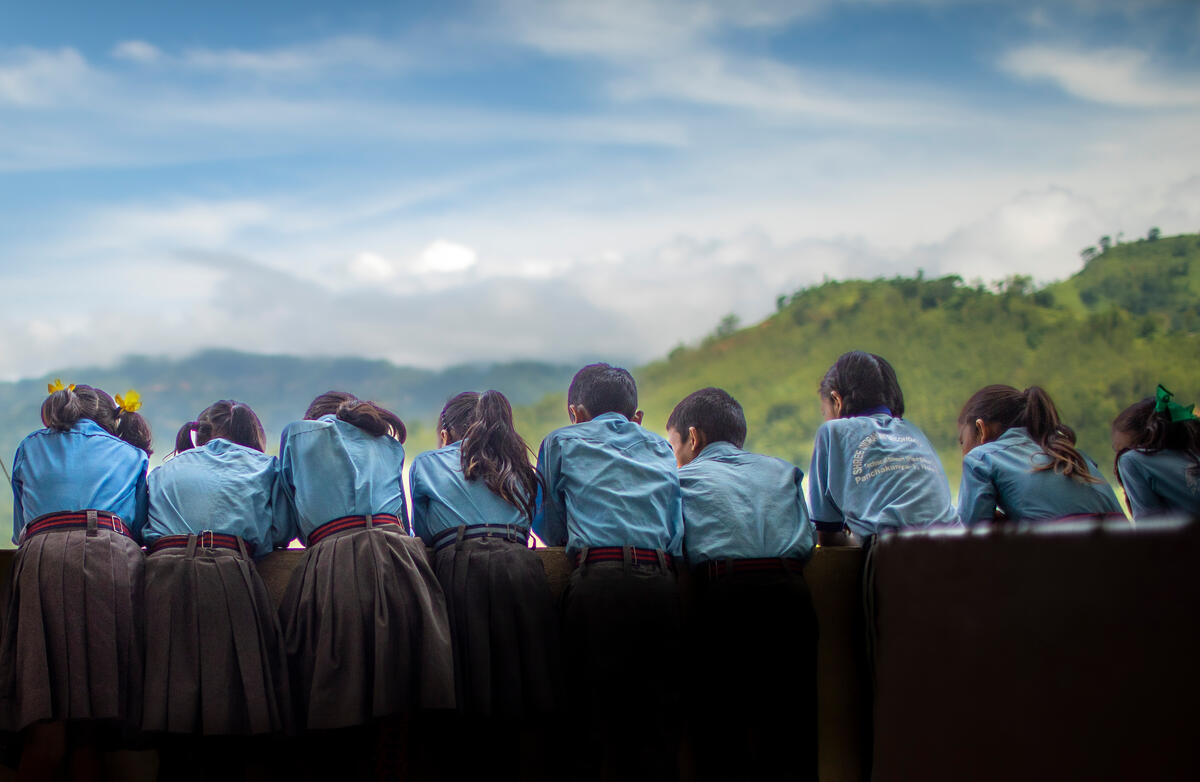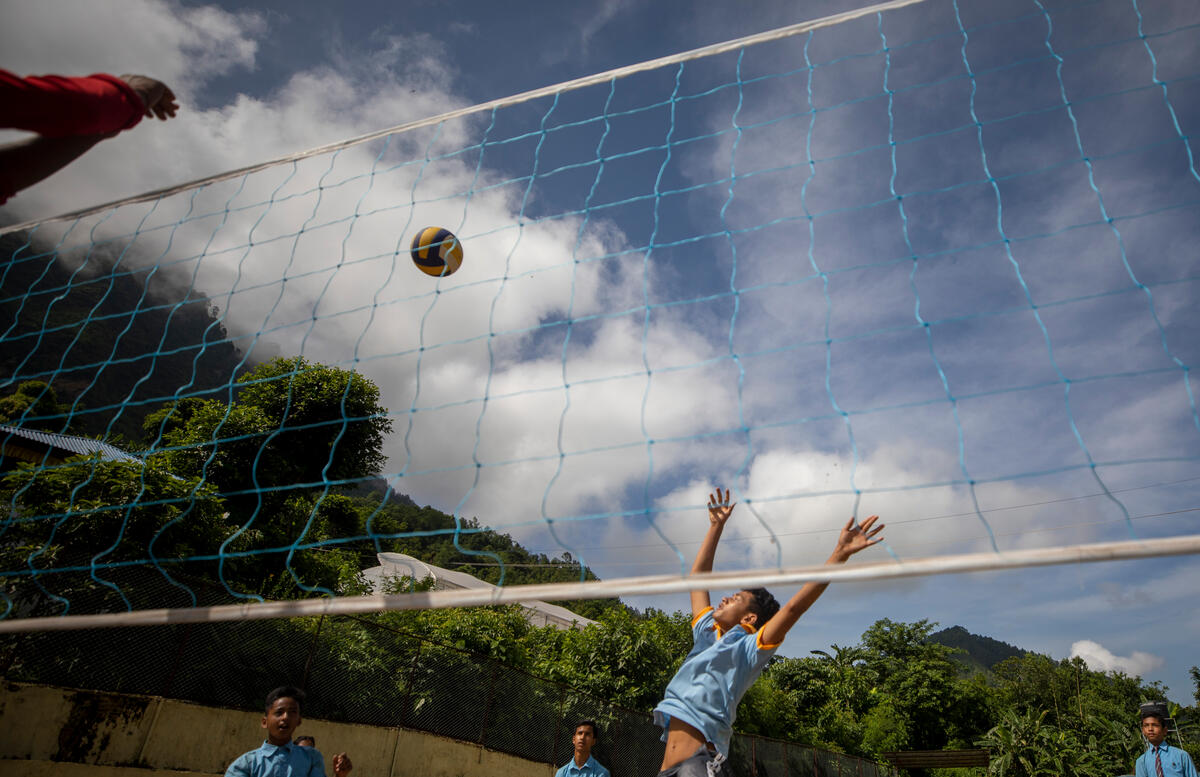

Nourishing Hope in Hardship
WFP's response to hunger and malnutrition across Asia and the Pacific in 2023.
The global food crisis is far from over.
Soaring food, fertilizer, and fuel prices disrupted agriculture and trade and took their toll on the lives of millions of people globally. In 2023, multiple threats collided and drove up hunger, from conflict and extreme climate conditions to economic shocks. These held back a huge proportion of the global population from escaping hunger and sustaining viable livelihoods.
Food insecurity rose even further.
By the end of the year, 333 million people around the globe faced acute levels of food insecurity - 78 million of whom were in Asia and the Pacific.
This was more than double pre-pandemic levels, revealing just how many had failed to break free from the shackles of hunger and poverty since the onset of COVID-19.
The scale was immense. Never before had so many people been uncertain of when their next meal will come, if at all.
This came amid drastic drops in funding.
Funding did not keep pace with rising humanitarian assistance needs. In 2023, donor contributions fell far below those from 2022 - by US$1.2 billion.
Alongside, other humanitarian and development actors, WFP faced the impossible choice of having to scale back and prioritize its assistance among the most vulnerable people, despite mounting crises.
Key Crises in 2023
Notable crises that WFP responded to in 2023. Hover to learn more
But WFP continued to nourish hope, even amid hardship.
We received only a third of the funding we required in 2023. This was less than half of what we received in 2022.
Despite this sharp drop in funding, we persevered to reach 31.6 million people with food and cash assistance. Throughout the year, Governments also continued to turn to us as their partner of choice in improving food security and nutrition.
WFP REACHED MULTITUDES IN 2023
Where one dot equals 20,000 people
BENEFICIARY REACH, 2023
We responded to multiple crises.
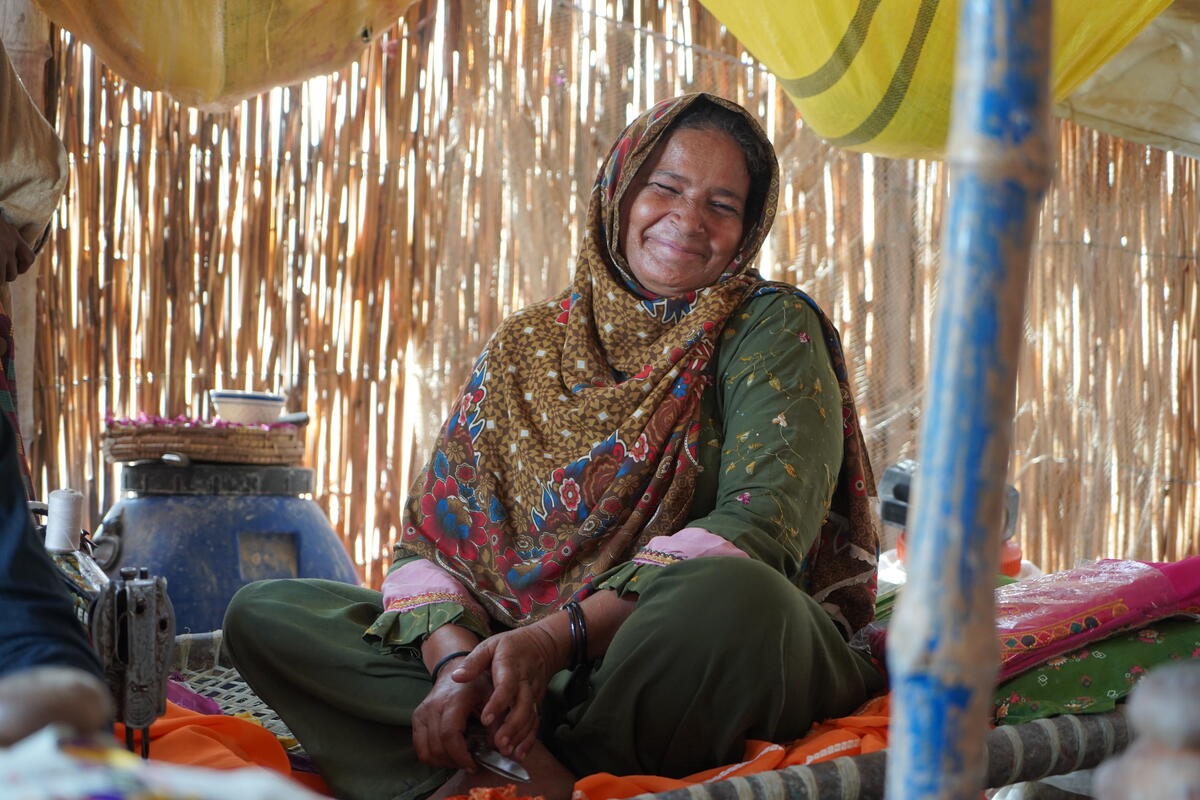
Pakistan
FLOOD RECOVERY
WFP continued to play a major role in the humanitarian response to the 2022 floods, reaching nearly 1.7 million people with emergency food and cash in 2023 and over 4 million people since the floods struck. We were also instrumental in bringing food assistance where it was needed through our supply chain expertise. Transitioning from emergency relief to early recovery, we empowered 1.8 million people with the tools and opportunities for dignified, productive livelihoods.
Sri Lanka
ECONOMIC CRISIS
WFP helped Sri Lanka bounce back in 2023. Over 1.2 million people were given a reprieve from skyrocketing food, fuel, and fertilizer prices through food, cash, and voucher assistance. When school meals and nutrition programmes were paused due to a lack of funding, WFP partnered with the Government to bring back these crucial social safety vehicles, helping people navigate their way out of hardships.
Vanuatu
CYCLONES
In Vanuatu, we deployed a three-pronged response in the aftermath of Tropical Cyclones Judy and Kevin. We rapidly carried critical cargo by air and sea, landing food and medicine in the hands of affected people in a matter of days.
When the cyclones felled infrastructure and cut off connectivity, WFP helped sustain coordination by establishing emergency telecommunications lines. Finally, using our technical expertise in food security monitoring, we supported the Vanuatu Government in food distribution and data management.
Cyclone Mocha
BANGLADESH AND MYANMAR
Pre-empting the impact of Cyclone Mocha, we fast-tracked anticipatory cash assistance to 28,000 Bangladeshis to safeguard their lives, assets, and livelihoods before the cyclone's landfall. This proved the effectiveness of anticipatory action when deployed at the right place and at the right time. Immediately after the landfall, WFP distributed fortified biscuits and hot meals in Cox's Bazar and Bhasan Char.
On the other side of the border, in Myanmar, WFP grappled with access restrictions brought by the halt of all humanitarian aid activities. When relief operations were allowed to resume, WFP supported 770,000 people with emergency food and cash.
Afghanistan
ECONOMIC CRISIS, EARTHQUAKE, RETURNEES
Thanks to donors' extraordinary efforts, we swiftly mobilized food to 110,000 earthquake-affected individuals and 300,000 returnees at the borders - all at a time when our funding levels had sunk lower than what we required to sustain our operations. Then, as another harsh winter threatened the very survival of many who were unlikely to make it through the winter without our support, we prepositioned food for 1.5 million people.
Nepal
EARTHQUAKE
Owing to its strategic prepositioning of food across parts of the country, WFP was able to immediately mobilize emergency food and cash to families who lost their homes and belongings to the earthquake overnight. We also provided young children with emergency nutrition support to prevent deterioration during these stressful times.
WFP'S CRISIS RESPONSE:

What perseverance looks like
Severe funding gaps forced us to make tough choices to reduce costs and maximize resources. Extraordinary efforts were made by WFP and donors to tide over difficult times. In many countries, we were able to reduce operating costs substantially. But the shrinking funding and mounting crises meant that we still had no choice but to prioritize amid already vulnerable populations.
In Bangladesh, we reduced rations in Cox's Bazar to ensure all refugees would still receive food. This reduction - from US$12 per month to US$10 in March, and eventually US$8 in June - meant refugees could only afford two-thirds of the minimum food basket. That meant refugees were living on just 9 cents per meal, or less than half of the cost of a nutrient-adequate diet. As a consequence, malnutrition spiked in the camps.
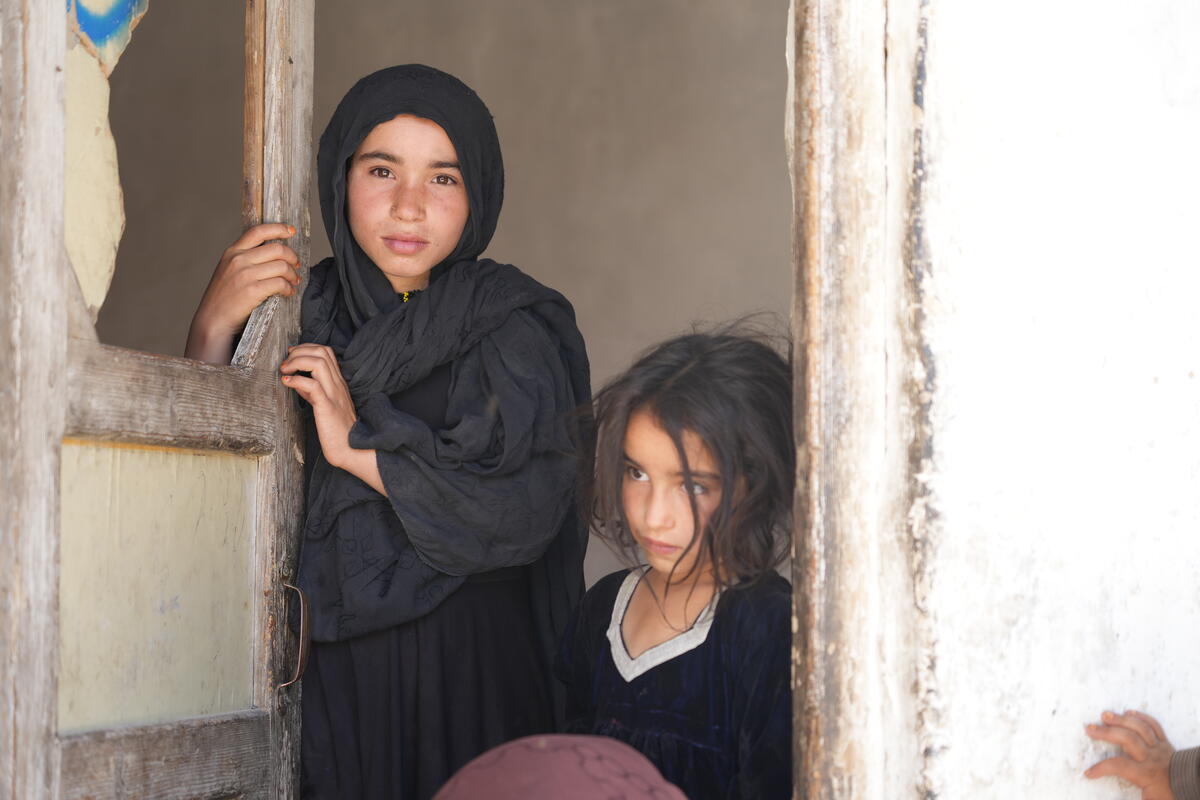
In Afghanistan, with 80 percent less funding received than in 2022, WFP had no choice but to cut 10 million people from receiving assistance in 2023, even though many of them rely on this assistance to get by. If that weren't enough, we had to reduce rations for some communities from 75 to 50 percent. The situation was desperate - we have had to turn away the hungry, to save some for the starving.
The situation for women and girls in Afghanistan took another step back as new edicts disenfranchised their freedom and denied them access to safe spaces. Despite these hurdles, we stayed and delivered without relaxing the principles by which we have always operated. Of the 18.6 million people we supported, 50 percent were women and girls. As aggravating factors and food insecurity continue to disproportionately affect women and children, sustainable solutions are needed.
LONG-TERM GAINS:
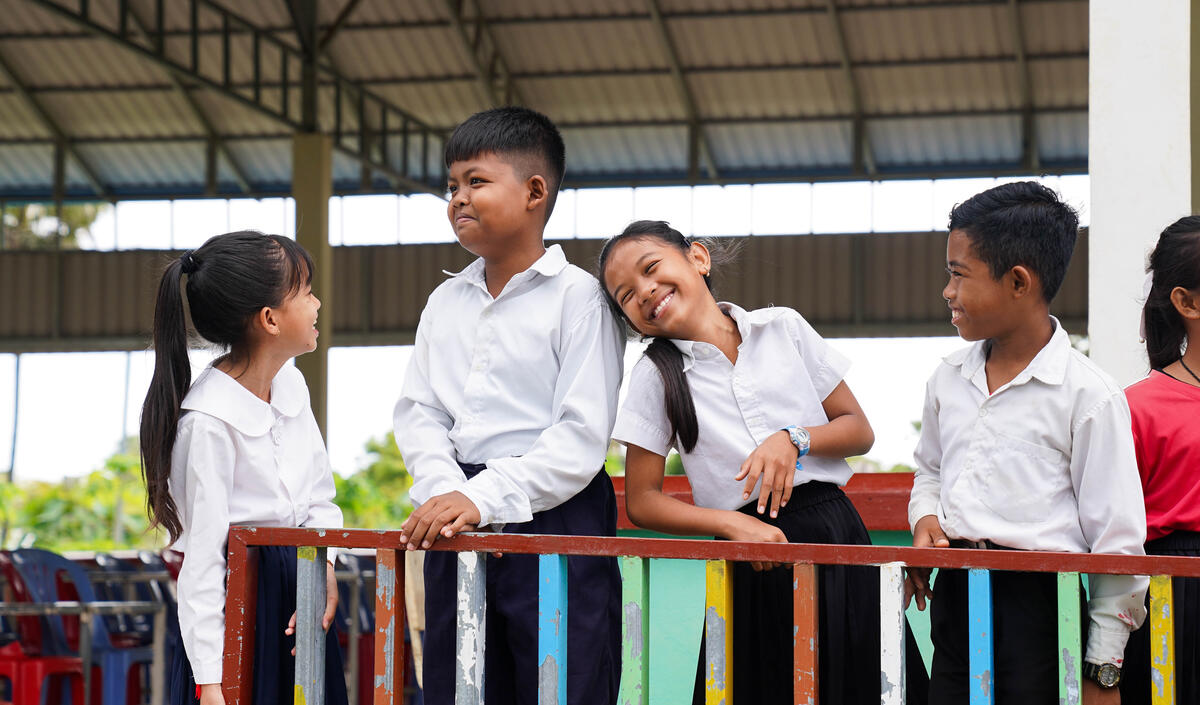
School Meals
A BETTER FUTURE ONE MEAL AT A TIME
Strengthening national school meals programmes remained foundational to WFP's engagement in the region. In addition to providing meals to millions of schoolchildren, WFP reinforced governments' school meals programmes by improving the quality of meals, strengthening the capacity of school administrators, caterers, and other stakeholders, linking smallholder farmers to the programme, and supporting policies that institutionalize the programme.
Our technical expertise led to the approval of a sub-decree that institutionalized home-grown school feeding in Cambodia, and the dissemination of the decree on school lunch promotion in Lao PDR. Thanks in part to WFP's advocacy efforts, the Kyrgyz Republic revised and passed a unified law on education, which guarantees hot meals for primary schoolchildren. In Tajikistan, WFP supported over half a million primary schoolchildren across the country and initiated a funds transfer pilot to include local traders in food procurement.
Nutrition
IMPROVED NUTRITION MAKES ALL THE DIFFERENCE
With a focus on children and pregnant and breastfeeding women, WFP prioritized nutrition as a core element of its work. In many cases, this meant working towards healthier diets by starting with improved knowledge and practices.
In Bhutan, WFP's social and behaviour change campaign, in partnership with the Government, was piloted in 15 schools. WFP's school menu planner is now used in 12 of 20 districts in the country to promote the consumption of nutritious, diverse, and locally-sourced meals.
In Bangladesh and India, WFP reinforced the governments' food fortification to scale up and reach 406 million people in India and 14 million in Bangladesh.
Resilience
PROMOTING SUSTAINABLE LIVELIHOODS
Sustainable food systems and livelihoods form the path to resilience. WFP continued to deliver its asset creation and vocational skills training activities to not only meet immediate food needs but also create opportunities for livelihoods and income sources that would last long after shocks subsided.
In Pakistan, 1.8 million people benefited from WFP's community asset creation and livelihood support. In Tajikistan, WFP supported twice as many household and community assets compared with the previous year.
Social Protection
SAFEGUARDING AGAINST SHOCKS
WFP continued to support governments in scaling and expanding their social safety nets. This included improving systems and databases, targeting the right households, and supporting service delivery and programme implementation. These efforts with governments are the cornerstone of our longer-term goals, recognizing their role in making a lasting impact on the lives of their citizens.
In Pakistan and the Philippines, WFP is the governments' biggest partner in their respective flagship social protection programmes. This support centred on providing nutrition support to poor households through specialized nutritious food (Pakistan) and food e-vouchers (Philippines). WFP also supported the Government in Bangladesh to scale up its benefits programme to reach 1.2 million mothers and young children with food and cash - reaching five times more beneficiaries than in 2022.
Climate Action and Emergency Preparedness
ONE STEP AHEAD OF DISASTERS
The Asia and the Pacific region is home to billions of people living in countries most prone to extreme weather events in the world. Leveraging its comparative advantage in large-scale emergency response, WFP bolstered governments' capacities in preparing for emergencies.
In the Philippines, WFP co-led the working group that developed the proposed bill to institutionalize anticipatory action and enable the Government to take proactive measures before shocks. The Government of Indonesia strengthened two national coordination mechanisms on climate events and food security with WFP's support. Across the Pacific Island countries and territories, WFP led efforts to enhance access to climate systems that anticipate and mitigate the impact of shocks.
Innovation
HARNESSING TECH FOR GOOD
WFP embraces innovation as a driving force toward Zero Hunger. Two country offices in the region showcased their innovative solutions and won the 2023 South-South and Triangular Cooperation Innovation Challenge - India for its 'Solar 4 Resilience' project, which uses solar-based food processing technologies; and Nepal for its 'Midday Meals Monitoring Platform,' which improves and expands the project's coverage and monitoring of daily meals distribution and food quality.
In the Philippines, WFP launched Farm2Go, an app that creates a digital marketplace to promote fair pricing and encourage direct selling of commodities straight from farm to table.
Evidence Generation
FROM DATA TO DECISIONS
We continued to draw on our decades of expertise in food security and nutrition to strengthen the evidence base for programmes across the region.
This meant generating in-depth insights to inform governments' social protection systems. WFP published a regional scoping study on enhancing food security and nutrition and managing risks and shocks through support to social protection systems, as well as country-level studies in Bangladesh, Cambodia, Fiji, Indonesia, Pakistan, Samoa, and Sri Lanka, in addition to the five country-level studies published from 2021 to 2022.
Gleaning from its vast capacity strengthening-related evidence, WFP produced a retrospective and formative analysis of its long-term development work; as well as a regional landscape review synthesizing financial and institutional capacities and coordination across 14 countries implementing national school feeding programmes. This latter also yielded guidance on government budgeting to enhance WFP's insights into public financing and assessment tools for financial and institutional coordination capacities.
WFP also continued to build up evidence on nutrition, particularly around efforts to fortify basic foods with essential micronutrients. Building on the five country-level rice fortification landscape studies published in 2022, WFP published a regional study and three more country-level studies in 2023 (Lao PDR, Nepal, and Timor-Leste) in a series that highlighted the potential for increased trade of fortified rice and kernels in the region. Additionally, WFP also documented India's rice fortification journey, where it plays a role in promoting, advocating, and providing technical support to stakeholders in developing a robust ecosystem for rice fortification at the national level.
WFP also developed a multi-country study that assessed the effects of the economic crisis on food security in Asia and the Pacific. It investigated dietary patterns, nutrition challenges, and resilience of food systems amid the crisis in Bangladesh, Lao PDR, Kyrgyz Republic, Pakistan, the Philippines, and Sri Lanka.
Intending to test the impacts of anticipatory action in Nepal, WFP also conducted an impact evaluation and found that families who received immediate support after a shock were more successful in avoiding food insecurity.
Finally, to understand the links between school feeding and disability inclusion, WFP developed a practice guide that identifies entry points for programme implementers to address barriers for children and youth with disabilities.
What's Next?
The global food crisis is far from over. While international food, fertilizer, and fuel prices have fallen from their peaks in 2022, they remain well over pre-pandemic levels (WFP Global Operational Response Plan, November 2023). The pandemic and ensuing economic slowdowns in many countries have eroded development gains and stripped the poorest of their coping capacity. A ripple of one small disaster spreads much farther and wider across communities than it did in the past.
This is why WFP remains committed and focused. Together with governments, UN system agencies, civil society actors, international financial institutions, and the private sector, we will not rest in our efforts to better prepare for and respond to emergencies, address climate risks, tackle malnutrition, and bring the most vulnerable into the centre of our collective efforts.
In 2024, WFP requires US$3 billion to sustain its life-saving and development agenda in Asia and the Pacific.
Donate ShareTheMeal
Learn More: Annual Country Reports
WFP produces annual country reports as part of its commitment to accountability and transparency in its operations.
Learn more about how WFP contributed to improving food security and nutrition, together with governments and other stakeholders across the region.
*There is some overlap between beneficiaries who received food and cash assistance, meaning that some received both food and cash.
Please contact us for any interest in Myanmar and DPR Korea's annual country report.
This year in review has been developed by Catherine Mones and Clinton Tedja.
Photo Credits: © WFP/Anam Abbas, © WFP/Arete/Aaron Palabyab, © WFP/Arete/Ivan Sarenas, © WFP/ Carol Taylor, © WFP/Darapech Chea, © WFP/Elise Blanchard, © WFP/Hasib Hazinyar, © WFP/Kinley Wangmo, © WFP/Nihab Rahman, © WFP/PhotoLibrary, © WFP/Samantha Reinders
Thanks to our funding partners
These achievements would not be possible without the generous support from our partners.




